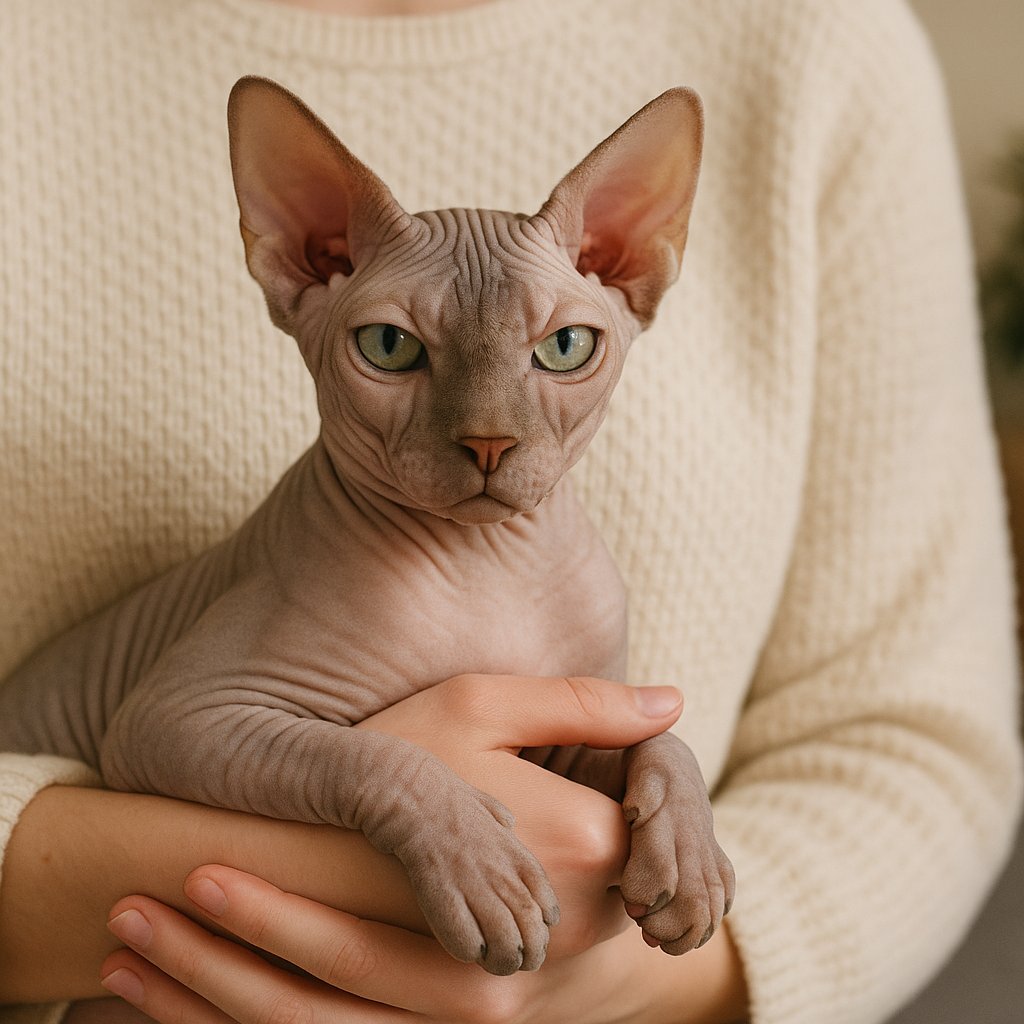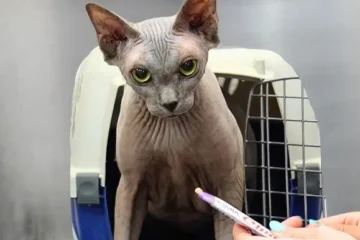Thinking about getting a hairless cat? You’re probably wondering if they’re easier to take care of since there’s no fur to deal with. Well, I’ve got some news for you – it’s not as simple as you might think.
Here’s the Real Deal
Hairless cats are kind of a mixed bag when it comes to care. Sure, you won’t be vacuuming cat hair off everything, but these little guys come with their own set of challenges that might surprise you.
What’s Actually Different About Caring for Hairless Cats?
Their Skin Needs Serious Attention
Think about it – without fur protecting them, hairless cats basically have naked skin exposed to everything. That means they need way more skin care than regular cats.
You’ll need to give them a bath about once a week because their skin gets oily and greasy. And I’m not talking about a quick rinse – they need a proper bath with special shampoo, warm water, and you’ve got to make sure they don’t get cold afterward.
They’re Always Too Hot or Too Cold
This was the biggest shock for me when I first learned about Sphynx cats. These cats are like that friend who’s always asking to turn up the heat or complaining it’s too hot. Without fur, they can’t regulate their body temperature like other cats.
When it’s cold:
- They need the house to stay around 70-75 degrees
- You’ll probably need to buy them little sweaters (yes, really!)
- They’ll hog all the warm spots in your house
- You might need heating pads or heated cat beds
When it’s hot:
- They can actually get sunburned just like people
- They need to stay inside during the hottest parts of the day
- You might need pet-safe sunscreen if they go outside
- They can overheat pretty quickly
The Good News About Hairless Cats
What’s Actually Easier
No More Cat Hair Everywhere:
- Your clothes won’t be covered in fur
- No more lint rolling everything
- Your vacuum cleaner will thank you
- Way fewer hairballs to clean up
Health Problems Are Easier to Spot:
- You can see fleas or ticks right away
- Skin issues don’t hide under fur
- No matted fur to deal with
- It’s easier to give them medicine
But Here’s What’s Harder
They Need More Daily Care:
- Weekly baths (most cats hate water, remember?)
- You need to check their skin every day
- Their ears need cleaning more often
- They need protection from the sun
Your House Needs to Be Cat-Ready:
- Temperature control becomes super important
- You’ll need warm bedding in multiple spots
- Special clothes for different seasons
- Cat-proofing against temperature extremes
Health Stuff You Should Know About
Skin Problems Are Common
Acne Issues: Hairless cats get blackheads and pimples, especially around their chin and tail. You’ll need to keep these areas clean and sometimes use special treatments.
Sun Damage: Just like people, they can get sunburned, age spots, and even skin cancer if they’re in the sun too much.
Oily Skin: Their skin produces oils that can clog pores and cause irritation. This is why they need those weekly baths.
Temperature Problems Can Be Serious
If they get too cold, they can actually get hypothermia pretty quickly. And if they get too hot, they can overheat faster than regular cats because they don’t have fur to help cool them down.
Let’s Talk Money
Taking care of a hairless cat usually costs more than a regular cat:
You’ll Need to Buy:
- Heating equipment (around $100-200)
- Cat clothes and sweaters ($50-150)
- Special bedding ($50-100)
- Skin care products ($30-60)
Ongoing Costs:
- More vet visits for skin check-ups
- Higher heating bills
- Regular grooming supplies
- Sometimes special food for skin health
Should You Get a Hairless Cat?

You’d Probably Love a Hairless Cat If:
- You actually enjoy taking care of pets (not just having them around)
- Your home has good heating and cooling
- You don’t mind giving weekly baths
- You pay attention to small changes in your pet’s behavior
- You’ve had high-maintenance pets before
- You live somewhere with mild weather
Maybe Think Twice If:
- You want a low-maintenance pet
- You travel a lot for work
- Your schedule is all over the place
- You live somewhere really hot or cold without good climate control
- You’re hoping for a completely allergy-free pet
- You prefer pets that mostly take care of themselves
Pro Tips for Success
Daily Routine
Every Day:
- Give them a quick look-over while petting
- Clean their ears if needed
- Check their eyes
- Make sure they’re not too hot or cold
Once a Week:
- Bath time (good luck!)
- Thorough skin check
- Trim their nails
- Wash their bedding
Setting Up Your Home
Temperature Control:
- Get a good thermostat you can program
- Have multiple heating options available
- Create cozy warm spots around the house
- Learn the signs that they’re too hot or cold
Skin Care Setup:
- Get a humidifier if you live somewhere dry
- Buy good quality, cat-safe skin products
- Keep their bedding super clean
- Find a vet who knows about hairless cats
So, Are They Easy or Hard to Take Care Of?
Here’s my honest take: hairless cats are easier in some ways but definitely more work overall. You won’t spend time brushing them or cleaning up fur, but you’ll spend that time (and more) on skin care and temperature management.
Think of it this way – they’re not necessarily harder to care for, they just need different kinds of care. If you’re up for learning about their special needs and you enjoy being hands-on with pet care, they can make amazing companions.
Questions People Always Ask
Do they really need baths every week?
Yep, pretty much. Their skin gets oily without fur to absorb it, so weekly baths are usually necessary to keep them healthy and not greasy.
Are they good for people with allergies?
They’re better than regular cats, but they’re not completely hypoallergenic. They still produce the proteins that cause allergies, just less of them.
How cold is too cold?
Most hairless cats start getting uncomfortable below 68 degrees, and it can be dangerous for them if it gets below 60 degrees without extra warmth.
Do they live as long as regular cats?
Sphynx cats typically live 8-14 years, which is pretty normal for cats. Taking good care of them definitely helps them live longer, healthier lives.
Can they go outside?
They can, but they need protection. Think sunscreen, appropriate clothing for the weather, and limited time outside during extreme temperatures.
Are they really that affectionate?
Most Sphynx owners will tell you these cats are super loving and social. They tend to be more people-oriented than many other cat breeds, probably because they need us more for warmth and care.




